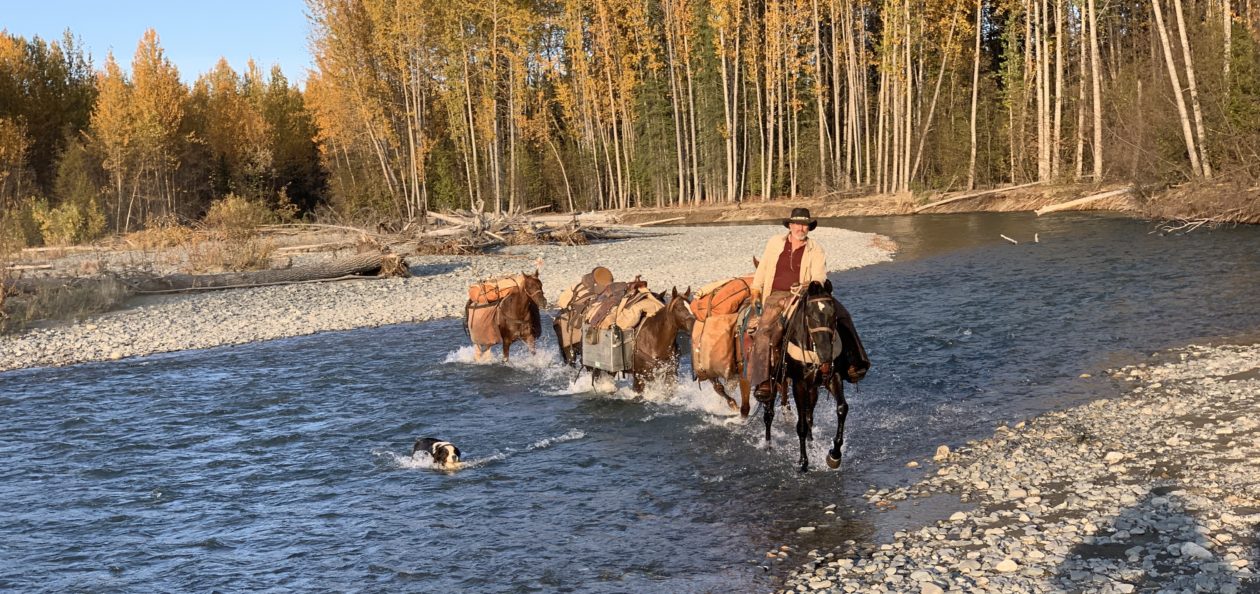I recently received a large gear order from Outfitter’s Supply, out of Columbia Falls, Montana. Kevin was nice enough to sponsor Dad and me on our upcoming pack trip with substantial discounts on much of the gear we ordered. When I first started acquiring gear for this trip a couple years ago, I began by perusing the various websites and online catalogs available for packing gear and ordering one or two items to see what I liked and what I didn’t think would hold up, before making a larger order. As I was doing that kind of research, I came across Trailhead Supply, and I placed an order for a couple feed bags from them. I wrote a blog post on the feed bags, which you can find here.

I bought another feed bag in this recent order from Outfitter’s Supply, having decided from the previous purchases to go with the tougher, more durable, canvas/leather bag. I am very pleased with what I received. This feed bag, bearing their Trail Max marketing name, is made with a leather bottom that is formed, so that the edges come up about an inch from the bottom. This should protect the canvas and seams from the chafing and scraping that will occur when the horse pushes the feed bag against the ground. The canvas appears to be of 24 ounce canvas. It is made with heavy-duty leather straps, approximately 9/10 ounce weight, that are riveted to the canvas at the top of the bag and extend all the way to the bottom, where it is again riveted to the leather bottom. The straps are stitched to the canvas bag with heavy thread down both edges of the strap. The leather is well-oiled and appears to be of good quality. The length of the hanger is adjusted by a heavy-duty chrome-plated steel roller buckle.
If you read the post on the previously purchased feed bags, you will remember that I was concerned that the air vent was positioned very low on the bag. I have had instances in which horses would not eat, because they could not breathe well with a couple scoops of feed in the bag.

I felt the vent was low enough on the bag that it would be covered by the feed and would be of little use to the horse. Since that time I have spoken to another experienced packer who once had a horse nearly drown when it tried to drink from a stream with a feed bag on. The feed bag held the water and the horse could not breathe. He felt the vent was more of a safety feature for water drainage than for breathing. I value his opinion and experience and learned that there is good reason for placing the vent low on the bag.
The vent on this new bag is placed a bit higher on the bag than the Trailhead Supply one. In my opinion the location of the vent on the Outfitter’s Supply bag is a good compromise between the safety issue of draining off water and allowing airflow to allow the horse to breathe easier with the bag full of feed. Outfitter’s Supply has also found an excellent place to stamp their maker’s mark – right on the vent.
The Trailhead Supply bag was priced at $21.95, but I no longer find it listed in their online store. They now offer only the nylon mesh bag with a canvas bottom.
The Outfitter’s Supply bag is a hefty $64.95, but it is a heavier-duty bag and made using heavier and better materials. Is putting this kind of heavy-duty work and materials into a feed bag overkill? Outfitter’s Supply’s experience in making their feed bags comes from doing repair work on feed bags used by the U.S. Forest Service. They seem to know their stuff.
I’ll have one of each on the trip and will report how each performed when we get home.







You must be logged in to post a comment.